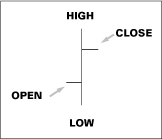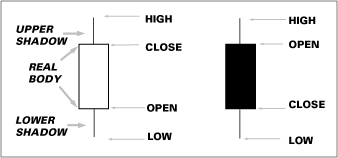Need quick, how-to info on basic technical analysis concepts? Do you want the technical analysis basics without having to spend all day looking for them? For technical analysis tips on how to overcome the market, read a standard bar chart, or interpret a candlestick chart, you've come to the right place.
>
>
Technical Analysis Secrets for Beating the Market
Technical analysis offers traders an edge to stay ahead in the market and improve your trading skills. So what are the top technical analysis ideas you need to know? Here are 15 technical analysis secrets to becoming a skilled technical analysis trader:
Get an edge — get some technical indicators. One technical indicator is better than none; just using the 200-day moving average on the Dow or S&P would have saved your bacon in all the recent bear market downturns. Use the confirmation principle — multiple indicators — to improve your odds. No indicator is a magic bullet, but don't demand so much confirmation from so many indicators that you hardly ever get a signal — analysis paralysis. Use indicators that work well together without duplicating the ruling concept.
Know what your indicators are measuring. Understand the crowd sentiment underlying your technical indicators. Take an empirical approach. See what you're looking at on the chart. Don't let wishful thinking skew your vision. Accept the evidence of your eyes. When you misinterpret a chart, go back and find what you missed.
Use multiple time frames to get the big picture. Look at weekly charts as well as daily and smaller time frame charts.
Trade with the trend. If the security is trending upward, buy it. When it stops trending upward, sell it. If you don't know what's going on, don't trade. Don't fall into the "value trap" — that a high-quality security will come back after a fall. It may, but you may have to live a long time to see it happen. While you're waiting, you're missing opportunities to build capital.
Tune out the prune-faced naysayers who say "market timing doesn't work." Maybe it doesn't work for them, but millions of people use technical analysis in one form or another today. Algorithmic trading and high-frequency trading would not dominate all major markets if exploitable chart patterns did not exist.
Treat trading as a business. You can beat the index averages. And you can make extraordinary profits in securities markets. But you have to strive for excellence in your analysis and in managing the trade. You are up against serious professionals who want to take your money; don't go into the ring with a hobbyist's mindset.
Trade for the right reason — to make money. If you're trading for entertainment or to prove some philosophical or political point, stop and choose a more appropriate activity to serve those goals.
Use fundamentals to select securities, not to trade them. Get as much fundamental information as makes you comfortable, but at the end of the day, use it to select securities, not to trade them.
Impose strict risk management controls. Technical indicators give you an advantage — the "trader's edge" — but no indicator is a crystal ball. Technical indicators are wrong — a lot — so you make up for imperfections in technical techniques by imposing strict risk-management controls. Don't lie to yourself about your track record. Examining losses may uncover a surprisingly simple way to avoid losses in the future. Examining gains may disclose some personal talent that you can build on.
Accept that you can't control the market but you can control yourself. Establish rules when you're unemotional for times when you are emotional to overcome bad decision making. Reduce trading after a big loss and a big gain alike. Pace your trading to the amount of money you have. Don't overtrade.
Never trade without a stop-loss order. Acknowledge that you will take losses, and control them ruthlessly to preserve capital. The biggest cause of losses isn't bad indicators; it's failure to admit your indicators are sometimes wrong. You can design a reasonable technical trading regime and still fail to make money if you don't control losses. If you can't tolerate any loss, you shouldn't trade at all.
Never trade without a profit target. Plan every trade. Establish your best-case profit as well as your worst-case loss. Trading and investing aren't gambling — they're a business, with probable outcomes that you can estimate. Take money off the table once in a while and put it somewhere safe. Capital allocated to trading is not "savings." It is always at some risk when it is actively placed in a market.
Chose expert advisors with great care. Do your own work first. Nobody else understands your risk appetite and tolerance for uncertainty the way you do. Everyone trades the same indicator on the same security a different way, and no one way is the right way. If you take guidance from gurus, figure out their strengths and weaknesses, and verify their work with your own. Don't take tips from anyone you have not pre-qualified. Don't give tips, either, unless you're quitting your day job to set up an advisory business.
Diversify. Trade several securities and types of securities to reduce the risk of a market catastrophe wiping you out.
Keep reading and exploring. The field of technical analysis is exploding in all directions. New combinations of indicators, new types of securities, and new trading technologies are being invented all the time. A lot of it is intimidating and frightening, but you never know when you might come across something that resonates with you — your own "Eureka!" moment.
>
>
>
Reading the Basic Price Bar Like a Technical Analysis Pro
The price bar is the basic building block of technical analysis. You need to know how to read the standard bar chart to succeed in technical analysis trading. As you trade, remember that most market indicators are nothing more than an arithmetic manipulation of the four standard price bar components. Get to know these four basic bar chart components by heart!
Get ready to buy the security if it has a series of higher highs and higher closes. Higher highs and higher closes indicate demand for the security is outstripping current supply — buyers outnumber sellers. The opposite is true, too — lower lows and lower closes mean you should get ready to sell, since sellers are overwhelming buyers. What if the price bars are not consistently offering higher or lower closes? This situation is called congestion, and you should hold off trading the security until you see a trend.

>
>
>
Know the Parts of a Candlestick Chart
Candlestick charts display the price bar in a graphically different way from standard bar charts. Candlesticks are dramatic and visually compelling, which makes them more appealing to many technical analysis traders.
A big white candle means the close was much higher than the open, and that's a good sign for a security buyer. A big black bar means the close was under the open and near the low, which may be hard to see on a regular bar but hard to miss in candlestick format. What if the candlestick shows the open and close about the same? This configuration means you can't read supply and demand in the bar and should not trade the security.

>
>
dummies
Source:http://www.dummies.com/how-to/content/technical-analysis-for-dummies-cheat-sheet.html
No comments:
Post a Comment